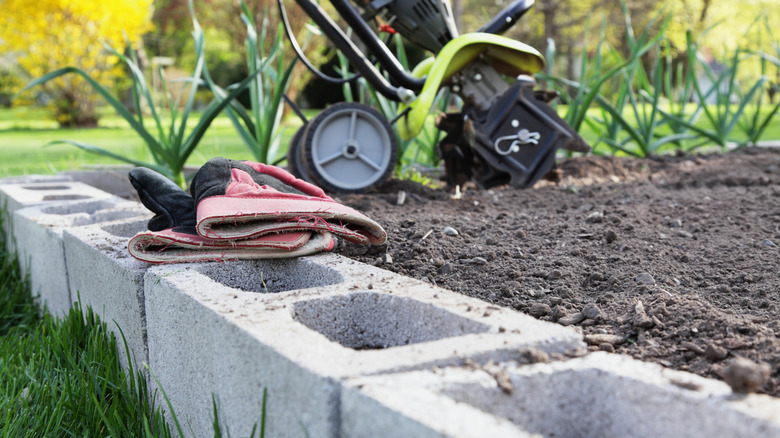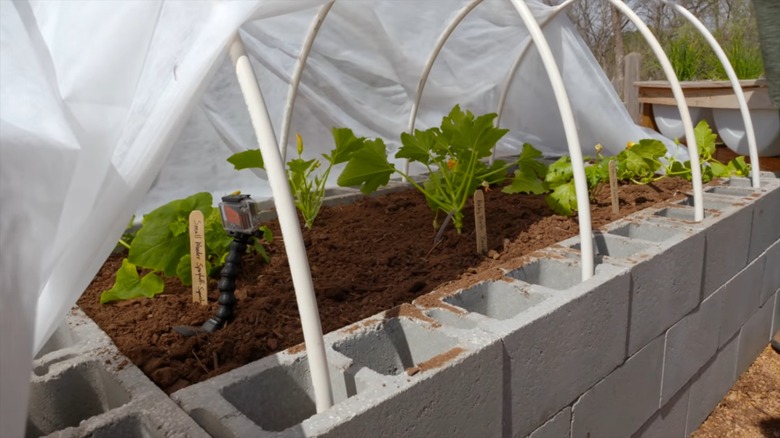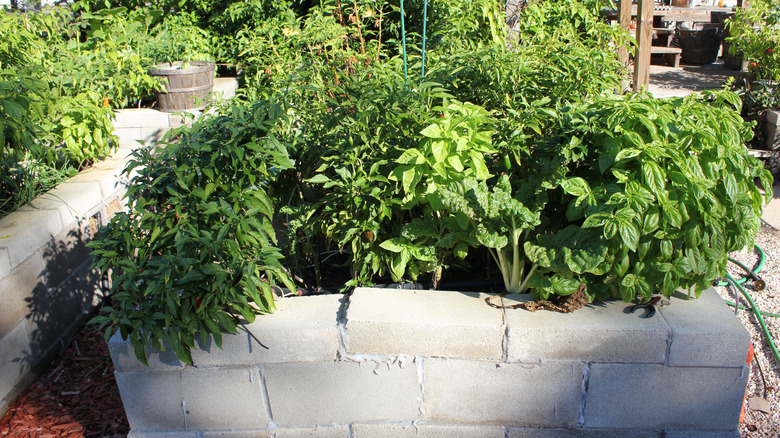Downsides To Think Twice About When Making A Cinder Block Raised Bed
Creating a raised garden bed can sometimes be a big investment. From the building materials to the soil, it can be tempting to cut corners and save money by using inexpensive materials like cinder blocks to build out your beds. That choice, however, can impact your garden for years to come. While there are some basic downsides, such as less than enviable aesthetics and the sheer weight of cinder blocks, that you have probably already thought about, there are other issues that can really impact the health of your plants.
The biggest issues with cinder blocks in a raised bed stem from the material used to make them: cement. Not only is cement porous, which means it absorbs water, causing a host of potential issues, but they also absorb heat, raising the temperature of your soil. At the same time, the materials used in creating cement have the potential to leach into your soil causing another set of problems. Ultimately, to get a great harvest, you'll want to use the best soil to fill your raised beds and the right materials to build them as well.
Porous material creates moisture issues
Using a porous material like cement blocks to build your raised beds can lead to a number of problems. To start, the blocks tend to absorb water from the soil, leaving the perimeter of your beds drier than the middle. This means you will have to water more while trying to balance the needs of the plants at the edge of the beds with those planted in the more moist soil in the middle. Some say wooden raised beds have similar disadvantages.
At the same time, cinder blocks will absorb heat, potentially raising the temperature of your soil. This will not only continue to dry out the soil, but could also burn up the roots of any plants that don't like dry, hot conditions. Even metal beds, which seem like they should get quite hot, tend to reflect more heat than cinder blocks, making them a potentially better option for plants that don't thrive in the heat.
Chemicals leach into the soil
When starting a raised garden bed, the health of the plants you will eventually grow there is paramount. And if you're hoping to grow organic food, you will want to pay special attention to what's in the soil of your beds. Cinder blocks often contain heavy metals that can leach into the soil over time. Additionally, they can contain lime, which can change the pH of your soil, creating more alkaline conditions than you may want to see in your raised bed soil.
The solution to these problems — from the moisture issues to the leaching — is lining your cinder block raised beds. You can use a pond liner, or other plastic material, to separate your soil from the walls of your cinder block beds. Or you can seal the block with a non-toxic product such as a polymer paint. These solutions are similar to those you might use to keep wood beds from deteriorating too quickly, but add to the cost and time needed to set up your beds. So you may want to weigh these considerations along with other concerns, like aesthetic appeal and the challenge of moving hundreds of pounds of cinder blocks. Whether or not they are worth the extra effort is ultimately up to you.


